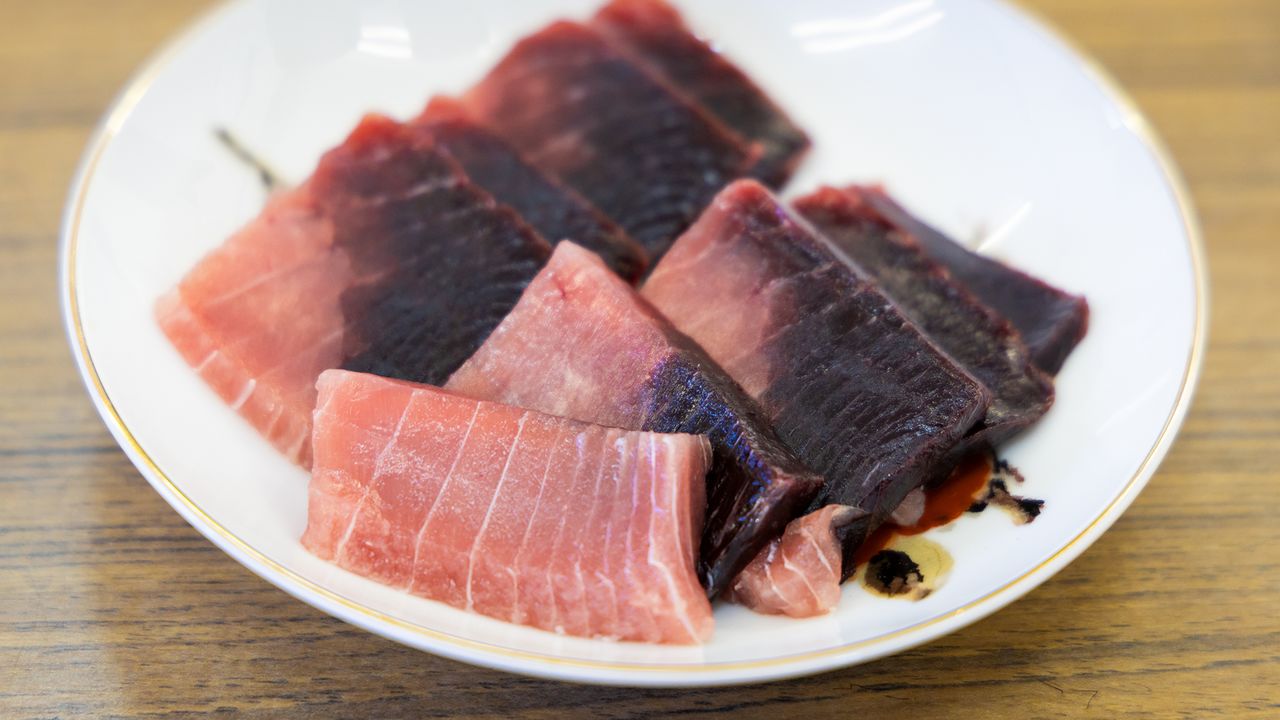
The Other Dark Meat? Antioxidant Selenoneine Makes Tuna Cuts an Ideal Food
Guideto Japan
Food and Drink Guide to Japan- English
- 日本語
- 简体字
- 繁體字
- Français
- Español
- العربية
- Русский
Newly Discovered Nutritional Value
Tuna remains a top sushi pick and a steadfast seafood favorite across Japan. Delicious flavor aside, many are aware that it is also an exceptionally healthy food, as well. The meat is rich in omega-3 fatty acids like eicosapentaenoic acid (EPA), and docosahexaenoic acid (DHA), which keep blood flowing smoothly and are recognized as helping to prevent arteriosclerosis or heart attacks. They can also lower triglyceride levels and so are effective in metabolic syndrome treatment and weight loss.
Now, exciting new research into tuna as a health food has been announced. Tuna’s dark red meat is also rich in an organic compound called selenoneine, which appears to not only be effective in preventing lifestyle diseases, but also in reducing stress and slowing the aging process.

Tuna chiai, or dark meat, contains plenty of selenoneine. (© Kawamoto Daigo)
This dark meat, called chiai in Japanese, is dark with blood, giving it an unappetizing reddish-black look and a powerful aroma. As a result, it is rarely put on the market, while wholesalers, processors, and fish shops dispose of most of it as waste. The revelation of this new nutritional value, though, has set a spark to the seafood industry.
Miura, Kanagawa Prefecture, is home to one of Japan’s biggest tuna bases, Misaki Harbor, and the city has been proactive in promoting practical uses for chiai. CEO Aoki Jun’ichi of seafood company Marufuku Suisan says, “We never could sell chiai and used to throw away tons of it every month.” He says that he wants to put it to use in the interest of sustainability, though, adding, “Honestly, fresh chiai is delicious as sashimi. Dipping it in a bit of salted sesame oil with lean akami tuna, like you’d do with liver sashimi, is a treat.” He goes on to say that if they can succeed in sharing the health benefits with consumers, “There’s a chance it could sell for around 1,000 yen a kilogram, like akami.”
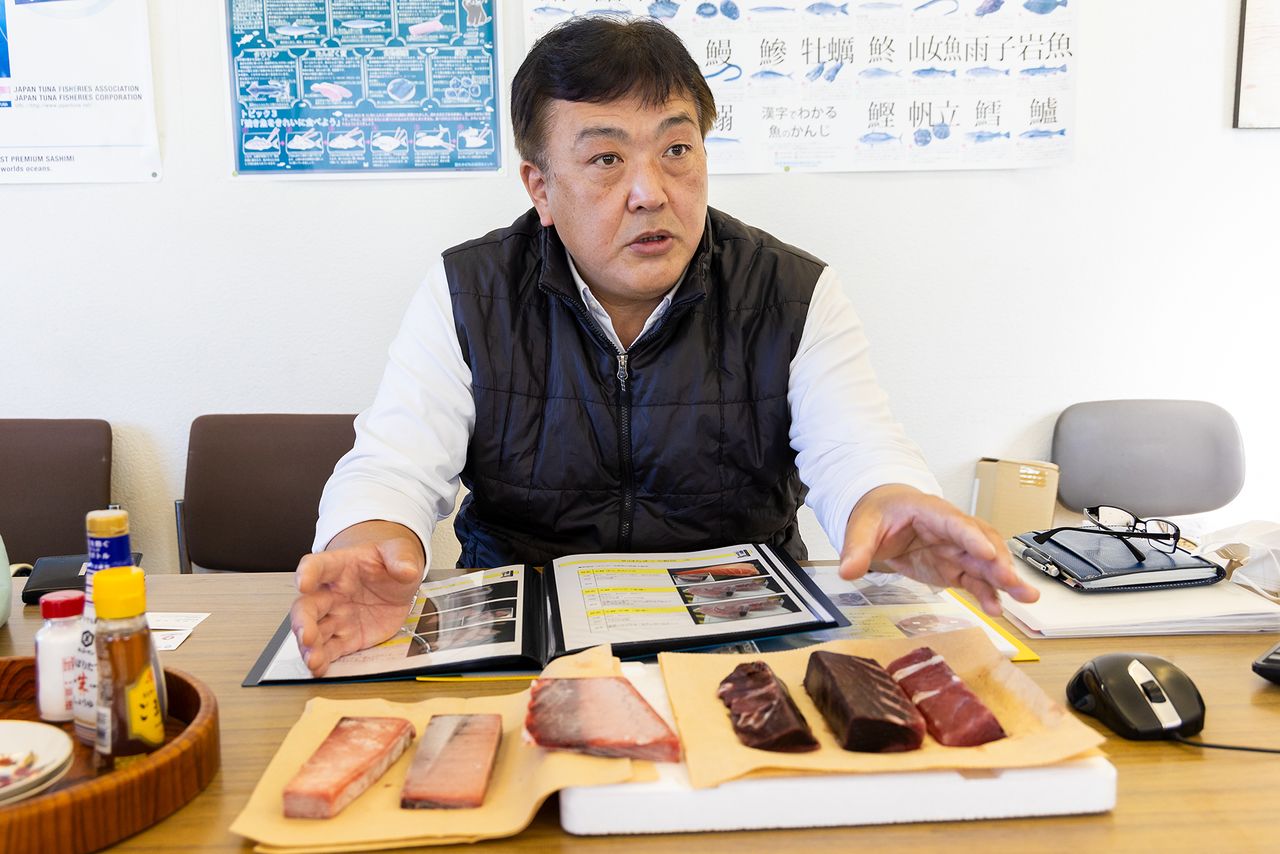
President Aoki talks about the potential of chiai over samples of the frozen tuna meat. He is also vice-chair of a research society looking into the health benefits of tuna, the Maguro Mibyō Kaizen Kōka Kenkyūkai. (© Nippon.com)
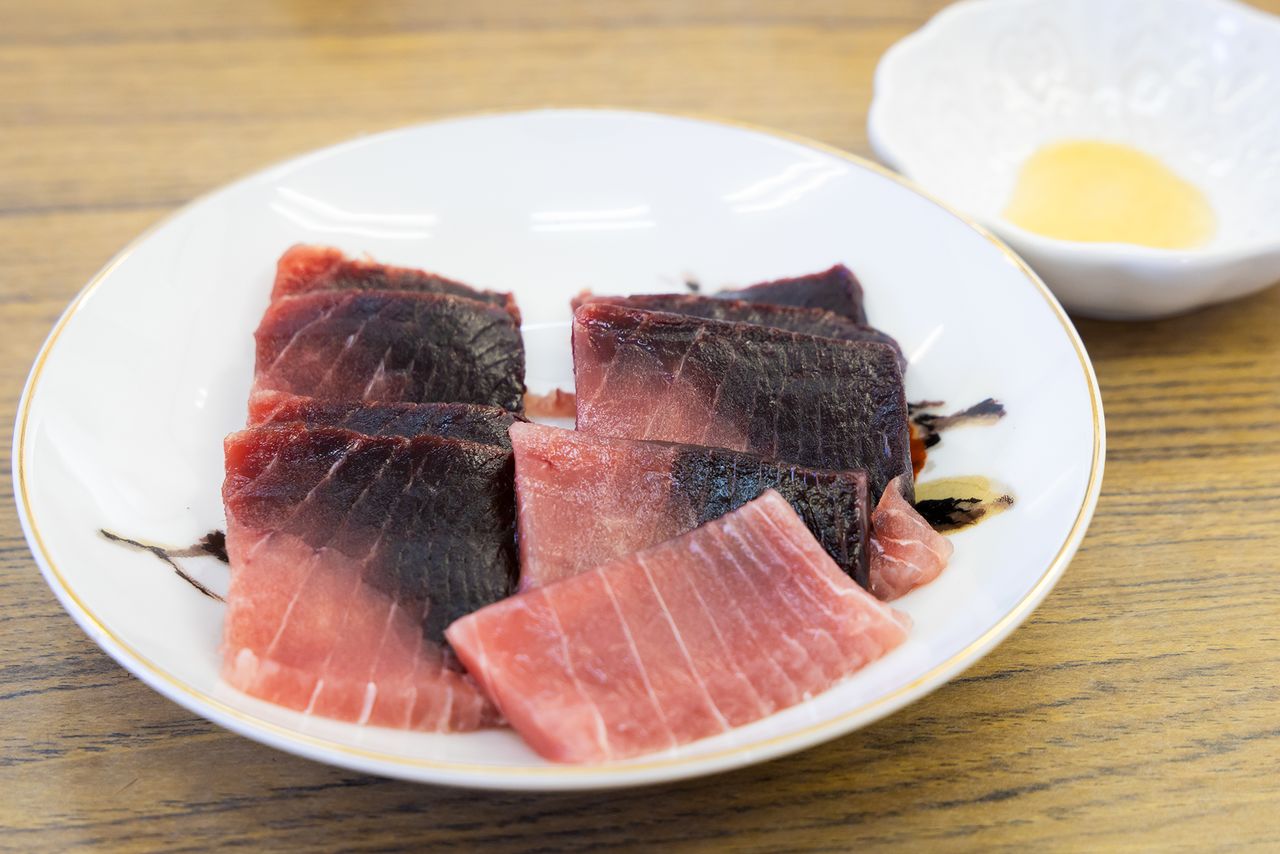
Sashimi sliced so it is roughly half and half akami and chiai. The rich flavor makes it a perfect match for sake. (© Nippon.com)
Nature’s Most Powerful Antioxidant
Selenoneine, a new hope for the seafood industry, was first announced in 2010 by Yamashita Yumiko of the Japan Fisheries Research and Education Agency in Yokohama. After that, rodent-based research continued, and Fisheries Research Center cooperated with the Kanagawa Prefectural Fisheries Technology Center and St. Marianna University School of Medicine in Kawasaki through 2022 on the first clinical studies. They soon began revealing the physiological functions of its nutritional content.
Selenium is an essential mineral for thyroid hormone function. It prevents oxidation in tissue cells and also works to remove toxins like mercury. Fish-based selenoneine is particularly effective as an antioxidant, the center explains: “It enters human blood and directly removes harmful free radicals.” The announcement also emphasized its nature as “among the most powerful class of antioxidants in nature.” It is 500 times more effective at removing free radicals than vitamin E.

The Kanagawa Prefectural Fisheries Technology Center stands on the shores of Jōgashima in Misaki Harbor. (© Nippon.com)
Fish like tuna, marlin, and mackerel contain high levels of selenoneine, and in the case of bluefin or bigeye tuna, chiai holds about 100 times as much as akami. The centers conducted a trial of around 100 prefecture and university employees in which each person ate tuna akami or chiai (one serving of 80 or 120 grams) three times a week for three weeks. They measured the blood concentration of selenoneine on the first and final days. The result was that those who ate chiai instead of akami had a much greater increase in concentration of selenoneine in the blood.
Selenoneine remains in the body for roughly two weeks. Studies show that free radicals increase as humans experience stress, which also leads to disease. Professor Yūdō Kazuo of St. Marianna University School of Medicine says, “Continuing to eat chiai can fortify antioxidant effects, which can in turn boost mental and physical health.” Before the clinical trial, roughly 70% of the members suffered from light to heavy stress, while after consuming the chiai, in contrast 70% claim they returned to a normal situation. There was also a group which displayed an over 100% increase in the anti-aging indicator Sirtuin 2, meaning there are hopes it could help prevent the deterioration of age.
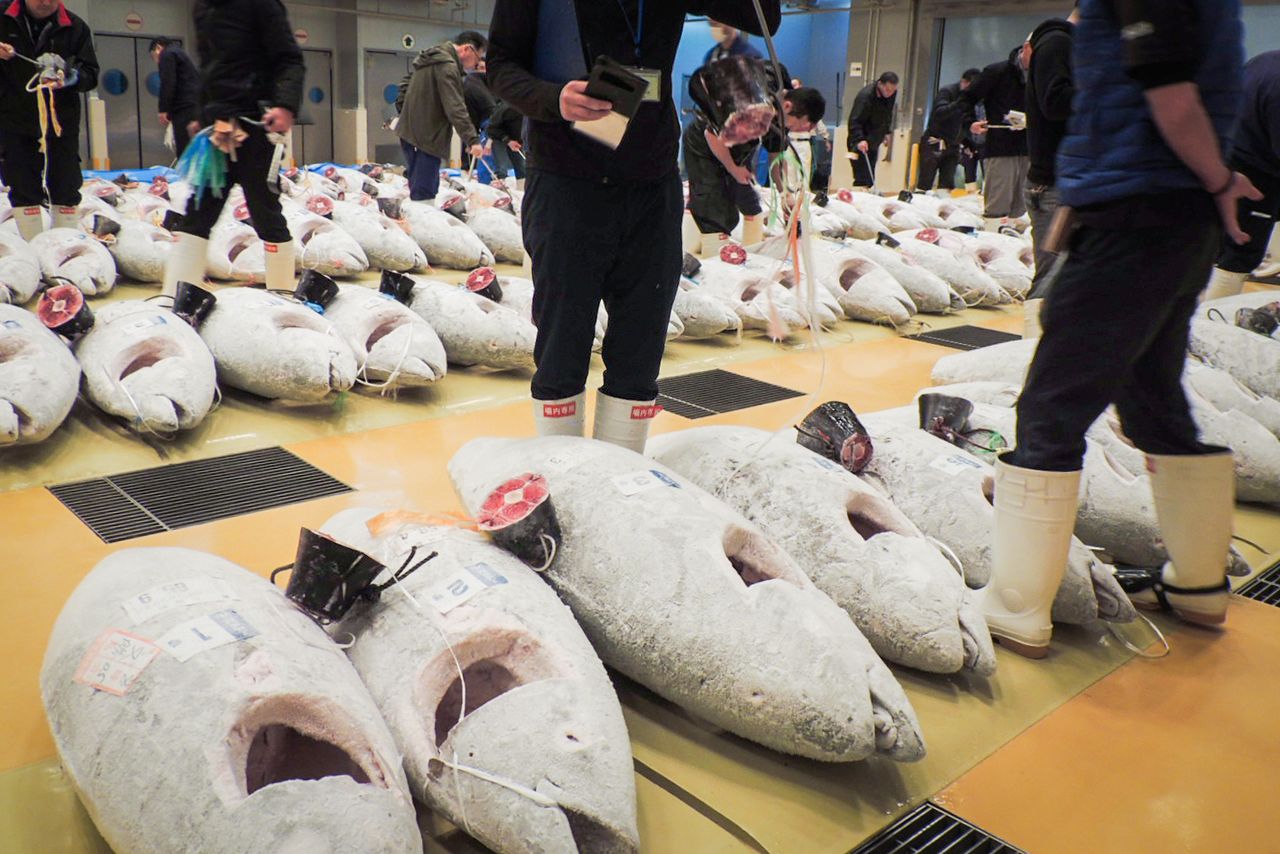
The tuna auction at Misaki fishing port. Frozen tuna keeps chiai fresh, meaning it can remain a good source of selenoneine. (© Kawamoto Daigo)
Chiai Always Popular at Fishing Ports
Inside the prefecture, the announcement inspired seafood processors and restaurants in Miura to cooperate in forming the Maguro Mibyō Kaizen Kōka Kenkyūkai. The group has started work toward selling and creating recipes for chiai, as well as expanding the value tuna as a health food.
The chair is Yamamoto Kōji, head of Hayuka Sōhonten, the originator of the Magurozuke brand of preserved tuna. His shop’s flagship product is made from black marlin, but roughly 20% of every fish ends up as waste, most of which is chiai. Yamamoto says with a laugh, “Chiai is popular with our staff. Grilled, it’s as tasty as meat, and lots of people take it home with them.”
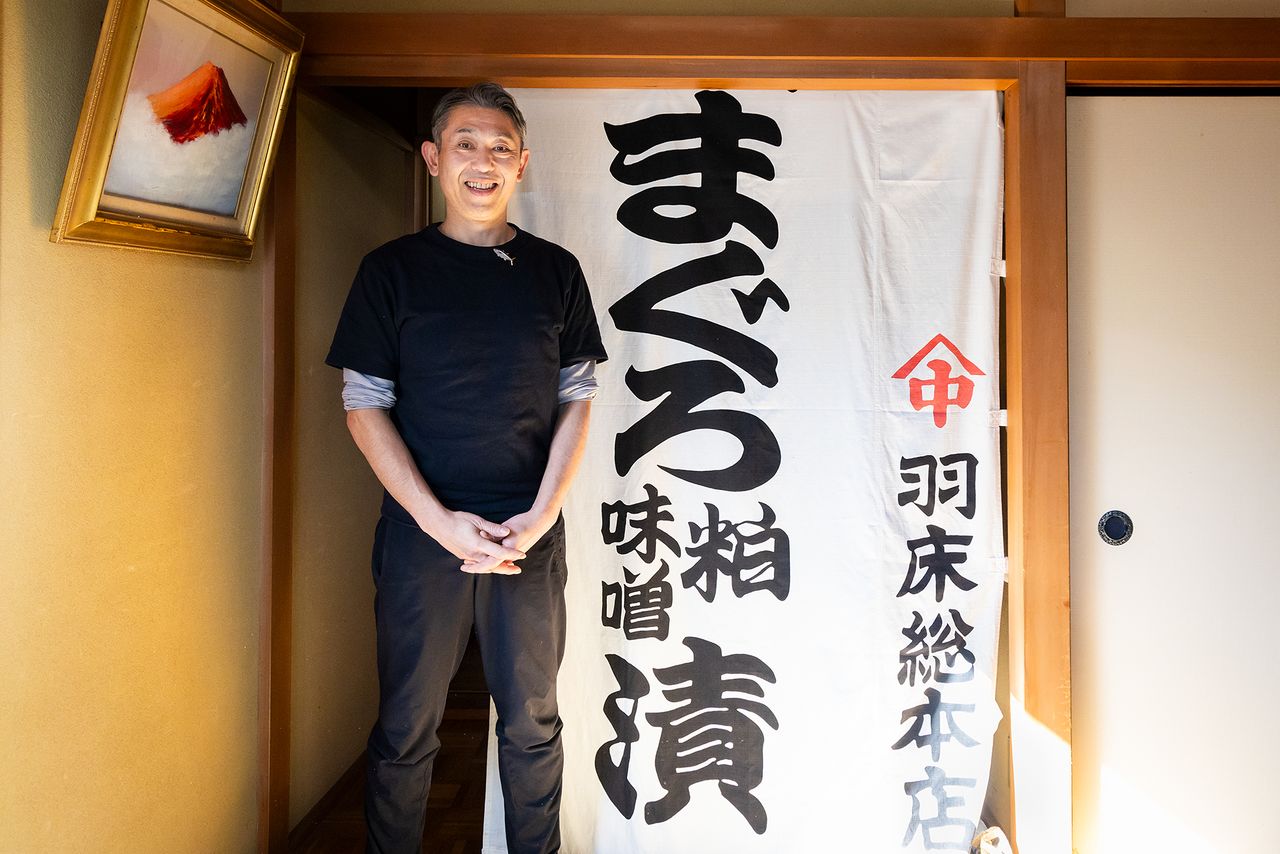
Yamamoto says that locals are aware of the delicious taste of chiai. (© Nippon.com)
Selenoneine content does not change with freezing or cooking, so there are few limits on preparation methods. Hayuka Sōhonten staff members keep bringing ideas and is now selling items like Misaki Kushikatsu—deep fried skewers of the meat—or Miura Stew. The stew is an attempt at retaining the effects of selenoneine and uses tuna stock as-is for simmering the meat.
The skewers combine chiai with onions and were so delicious that they were adopted as a product at the first taste-test. Yamamoto says, “The stew is cooked with Miura vegetables like tomatoes and daikon, so I hope it helps revitalize the whole city.” He adds that they are considering offering it at port events.
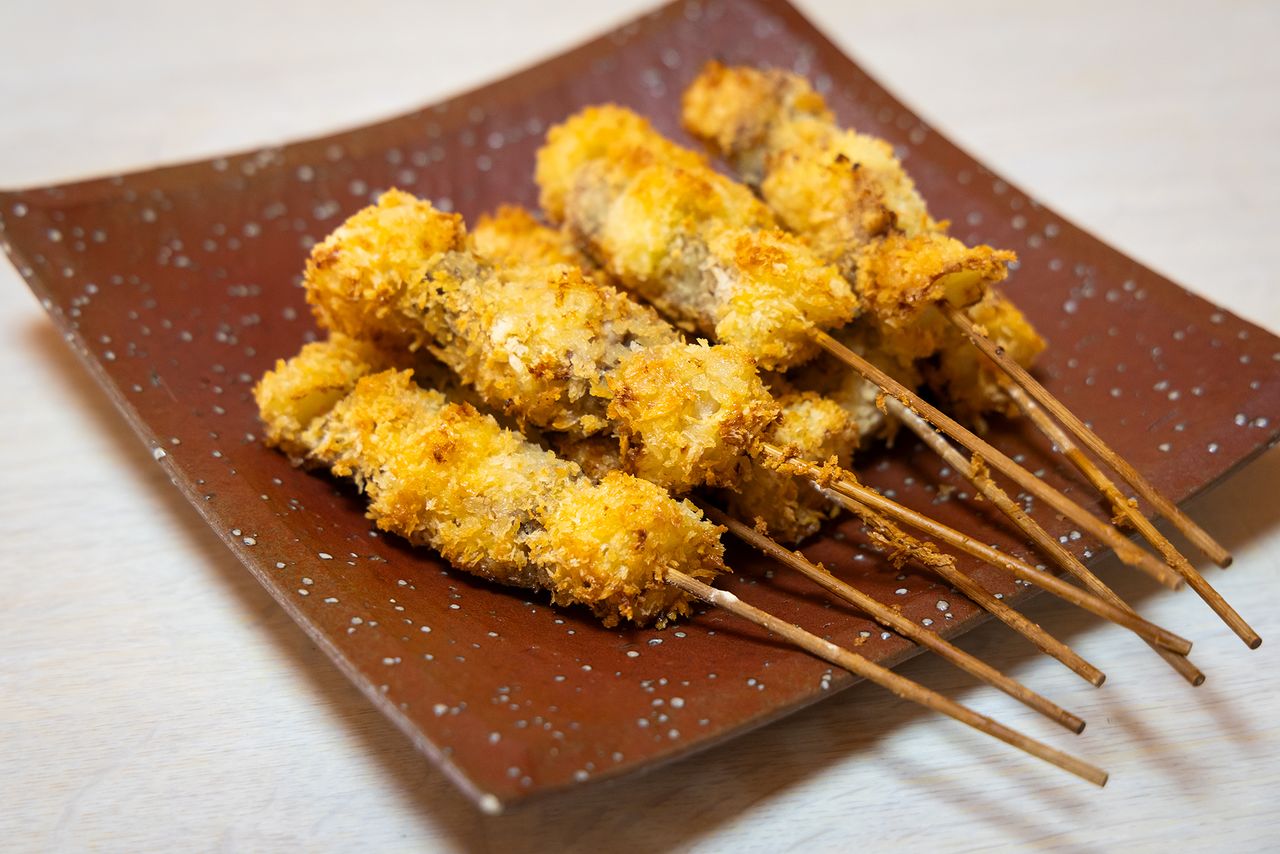
The Misaki Kushikatsu hits on both flavor and texture. The aftertaste is light, meaning people can eat skewer after skewer. (© Nippon.com)
Misaki Continues the Search for Recipes and Names
Misaki is a popular sightseeing spot within daytrip reach of the capital, and was popular even during the height of the pandemic. Even so, tourism has fallen off; even with the pandemic’s easing, regional tuna consumption is still only about half what it was in 2019.
Selenoneine trials have just begun, so its health benefits are still largely unknown, and development of supplements will still take time. As chiai is quite perishable, the Kanagawa Prefectural Fisheries Research Center says, “First, we will popularize it as a local specialty dish to boost the image and revitalize Miura tourism, while spreading knowledge of tuna as a health food at the same time.”

Since I visited on a weekday, there were few tourists at the Misaki Fisharena Wharf Urari and ferry port. (© Nippon.com)
At tuna and local fish specialty restaurant Kaishū, escargot-style chiai steak is already the most popular dish. This thick-cut chiai steak is topped with butter-garlic sauce, making it perfect with rice. Chinese restaurant Kōrakutei, famous for Misaki maguro ramen, is working on dishes like shūmai steamed dumplings made with marlin and tuna chiai, or herbal soups. They are now in the middle of experiments in the run-up to sales.
The Maguro Mibyō Kaizen Kōka Kenkyūkai is in the process of searching for a new name to help change the public image of chiai, whose label calls to mind the blood that gives it its deep color. They will be setting this new name this fall, to help make Miura a place where people can fully enjoy the flavor and health benefits of tuna.
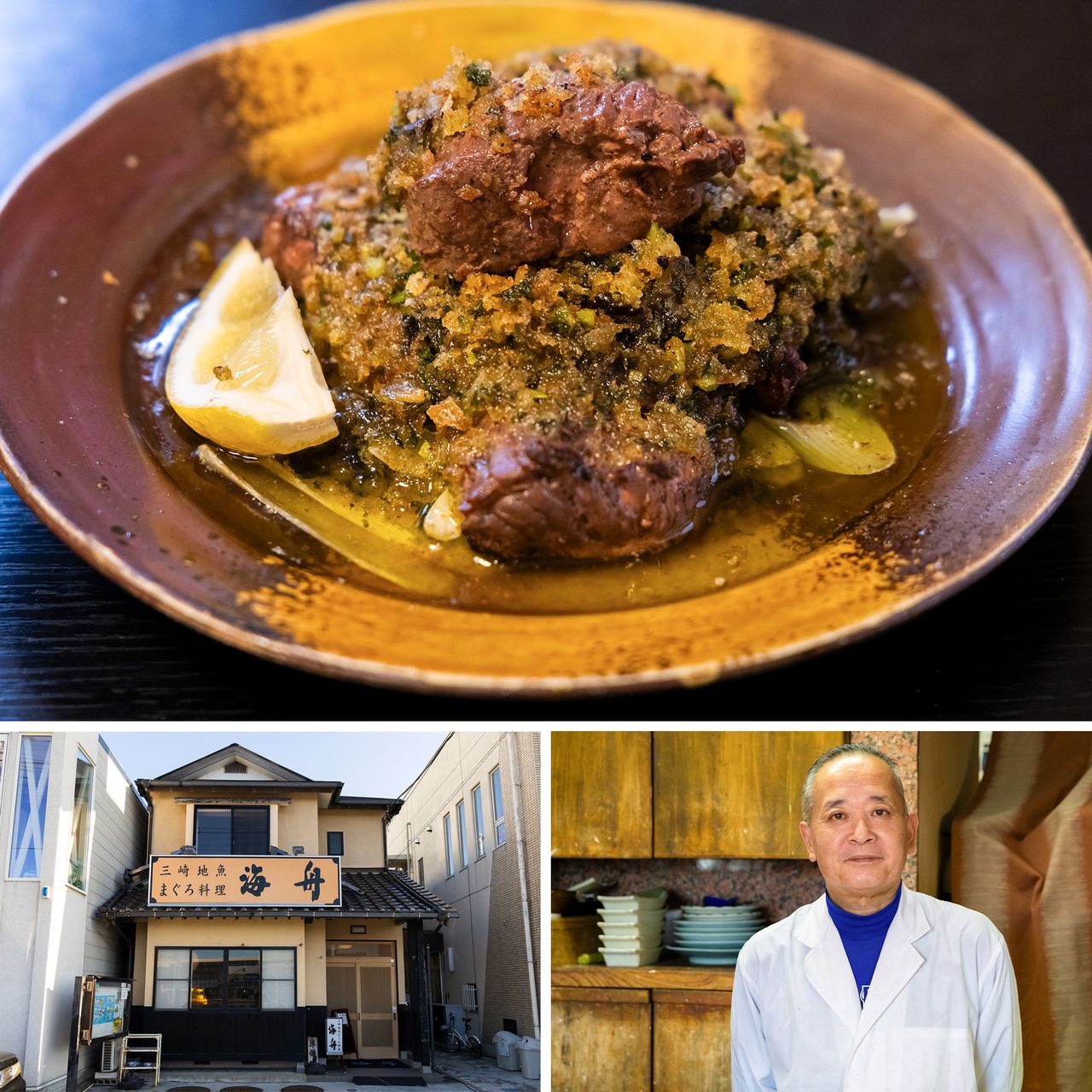
Top is the satisfying chiai steak escargot style, bottom left is popular Misaki portside restaurant Kaishū, and bottom right is shop owner Kusama Kazunari. (© Nippon.com)
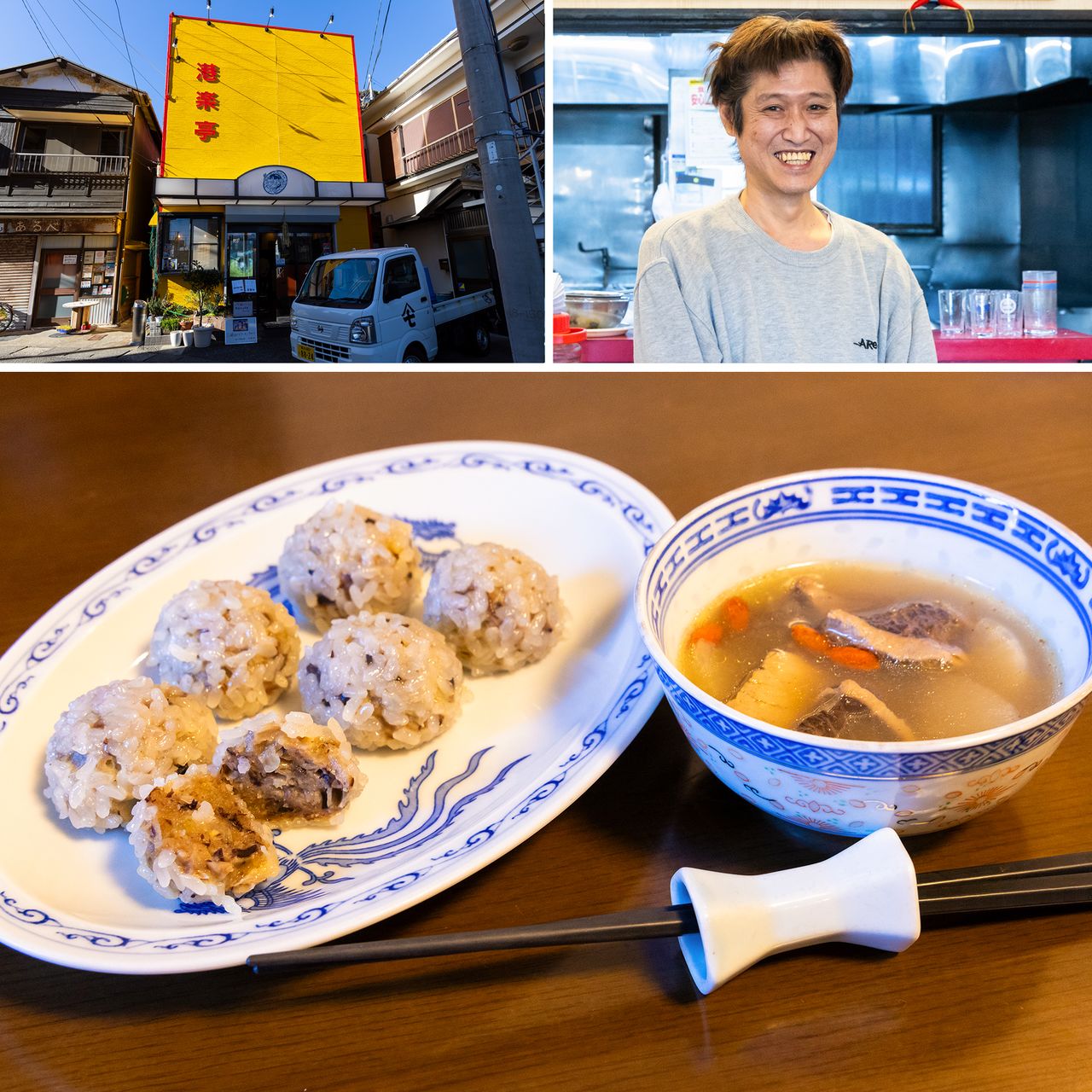
Top left is Kōrakutei, which draws ramen lovers from around Japan, with second-generation owner and head of Misaki Maguro Club Hasegawa Masanori, and at bottom is a dish of marlin and tuna shūmai wrapped in glutinous mochi rice, with Chinese herbal soup. (© Nippon.com)
(Originally published in Japanese. Banner Photo © Nippon.com.)
